#modern claude monet
Explore tagged Tumblr posts
Text

Claude Monet (French, 1840 - 1926) • The Luncheon • 1868 – 1869 • Städel Museum, Frankfurt, Germany
#art#painting#fine art#art history#oil painting#claude monet#monet#modern art#impressionism#french artist#19th century european art#european art#paintings of domestic interiors#interior with figures#paintings of rooms#the painted room art blog
153 notes
·
View notes
Text
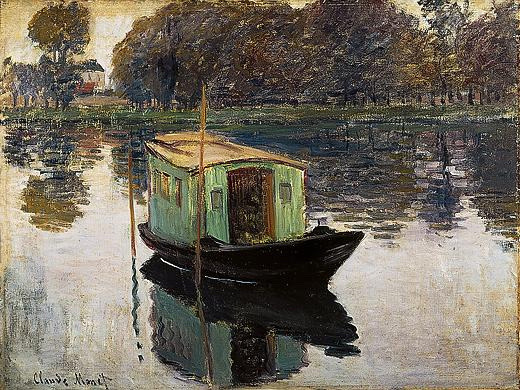
Claude Monet, The Studio Boat, 1874
(Monet’s floating “studio” in Argenteuil)
#claude monet#Argenteuil#impressionism#impressionist art#impressionists#french impressionism#art history#modern art#french artists#French painters#french art#aesthetic#tumblraesthetic#tumblrpic#aesthetictumblr#tumblrpictures#tumblr art#tumblrstyle#artists on tumblr
1K notes
·
View notes
Text

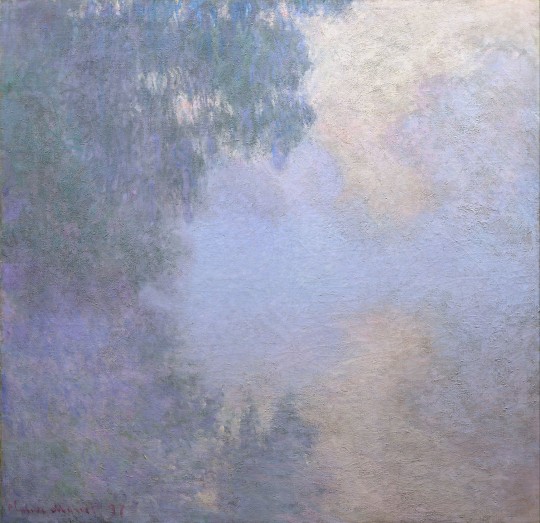
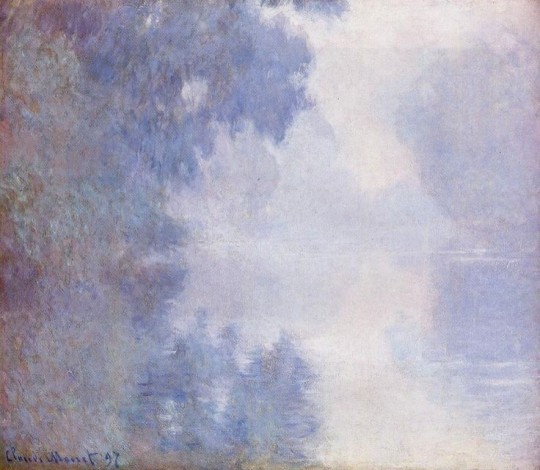



from the series “Mornings on the Seine”, by Claude Monet
#claude monet#art#impressionistpainting#impressionism#sunday morning#mornings on the seine#france#french art#painting#classical studies#modernism#19th century#20th century#monet#camille pissarro#manet#Renoir#nature#observational art#water lily#landscape#beauty#beautiful sky#sky#clouds#mist#scenery#wallpaper#aesthetic#moodboard
920 notes
·
View notes
Text

The Water-Lily Pond (1899) 🎨 Claude Monet 🏛️ The National Gallery 📍 London, United Kingdom
For Monet, gardens offered a refuge from the modern urban and industrial world, although he and his fellow garden enthusiasts benefited from modern advances in botanical science that were creating new hybrid flowers in a wide choice of shapes and colours that could be produced on an almost industrial scale. He made modest gardens in the homes he rented in Argenteuil and Vetheuil in the 1870s, but from 1883, when he moved to a rented house in Giverny, about 50 miles to the west of Paris, he had more scope to indulge his passion for plants. He became a dedicated gardener with an extensive botanical knowledge, and sought the opinions of leading horticulturalists. As Monet’s career flourished his increasing wealth enabled him to fund what became a grand horticultural enterprise: by the 1890s he was employing as many as eight gardeners.
Monet began by refashioning the garden in front of the house, the so-called ‘Clos Normand’, replacing the existing kitchen garden and orchard with densely planted colourful flower beds that were filled with blooms throughout the seasons. He was able to buy the house in 1890, and three years later he purchased an adjacent plot of land next to the river Epte beyond the railway line at the edge of his property. The plot had a small pond with arrowhead and wild water lilies, which he wanted to turn into a water garden with a larger lily pond ‘both for the pleasure of the eye and for the purpose of having subjects to paint’.
The idea may have occurred to him after he had seen the water garden at the 1899 Exposition Universelle in Paris created by the grower Joseph Bory Latour-Marliac, who bred the first colourful hardy waterlilies. Monet began by requesting permission from the Prefect of the Eure to dig irrigation channels from the Ru – a branch of the Epte – to feed his pond, but the Giverny villagers objected, fearing it would contaminate the water and that the foreign plants would poison their cattle. Monet was furious, but three months later permission came through and he began to enlarge the existing pond, replacing the wild water lilies with Latour-Marliac hybrids available in yellows, pinks, whites and violets.
The pond was enlarged on further occasions – in 1901 and 1904 – tripling the size of the water garden. Together with the flower garden on the other side of the railway track it became the principal preoccupation of the last 26 years of Monet’s life. While the Clos Normand garden was laid out along fairly traditional lines, harking back to the formal French gardens of seventeenth-century Europe, with a central alleyway and geometrically arranged beds, the water garden was more Eastern in inspiration. Its less regimented, more natural design and more muted colours created a quieter, meditative atmosphere. Monet erected a Japanese bridge over the western end of the pond that took its inspiration from the bridges in ukiyo-e Japanese prints. He was a keen collector of these prints and he owned a copy of Hiroshige’s Wisteria at Kameido Tenjin Shrine (1856), one of the many prints that features a curved bridge. In a more general sense, the water garden reflected Monet’s admiration for the Japanese appreciation of nature.
Monet had to wait for his water garden to mature before he could begin to paint it in earnest. As he later recalled: ‘It took me some time to understand my water-lilies. It takes more than a day to get under your skin. And then all at once, I had the revelation – how wonderful my pond was – and reached for my palette. I’ve hardly had any other subject since that moment.’ In total, Monet painted 250 canvases of his water garden. Around 200 of these represent water lilies floating on the surface of the water, while the remainder also show the Japanese bridge, the weeping willow trees and wisteria and the irises, agapanthus and day lilies on its banks. In all these pictures Monet was painting a subject that was already ‘pictorial’ – a landscape that had been carefully composed according to his personal aesthetic. The National Gallery has three further paintings of the water garden :Water-lilies, setting sun; Irises; and Water-lilies.
Monet painted three views of the Japanese bridge in 1895, not long after it had been constructed, but then took a break from the subject, only returning to it in 1899. By now the pool was overhung by vegetation and surrounded by plants, but to judge from contemporary photographs it was never as enclosed as Monet painted it, and he exaggerated the feeling of claustrophobia. In December 1900 he exhibited 12 paintings at Durand-Ruel’s gallery in Paris, all of which showed more or less symmetrical views of the Japanese bridge.
In this painting, as in the others in the series, we are looking down onto the surface of the water, where the lily pads float into the distance, meeting the dense foliage on the far bank. Weeping willows are reflected in the pond and clumps of iris border its banks. The perspective seems to shift so that it is hard to find a single focal point; it is as though we are looking up at the bridge but down on the waterlilies. The picture, like the water itself, seems to oscillate between surface and depth. The mainly vertical reflections provide a counterpoint to the horizontal clumps of the lily pads. Different colours, applied with thick brushstrokes, are placed next to each other. This way of painting has more in common with Monet’s early Impressionist works than his more recent paintings of mornings on the Seine, where he had used softer, more blended strokes to convey hazy atmospheric effects.
The Japanese bridge series marked a turning point in Monet’s art. From now on his subjects were painted from an increasingly confined viewpoint, conveying the sense of an enclosed world. In later paintings of the pond, he would dispense with the banks and bridge altogether to focus solely on the water, the reflections and the water lilies. The culmination of Monet’s water lily paintings were the Grandes Dėcorations, 22 enormous canvases each over two metres high and totalling more than 90 metres in length, which he completed months before his death and donated to the French state. These are now on permanent display in two oval rooms in the Musée de l’Orangerie, Paris.
#The Water-Lily Pond#1899#Claude Monet#The National Gallery#London#United Kingdom#oil painting#painting#oil on canvas#Modern art#Impressionism#french#art#artwork#art history
134 notes
·
View notes
Text
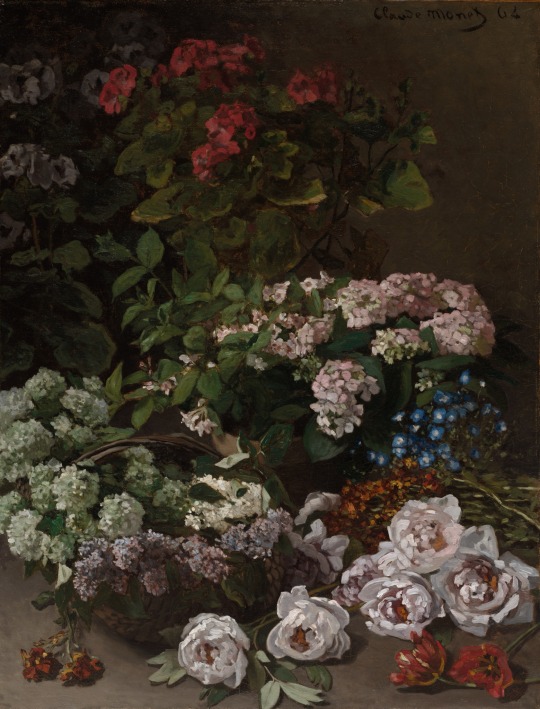
“SPRING FLOWERS” CLAUDE MONET // 1864 [oil on fabric | 56 7/8 x 46 1/8”]
170 notes
·
View notes
Text
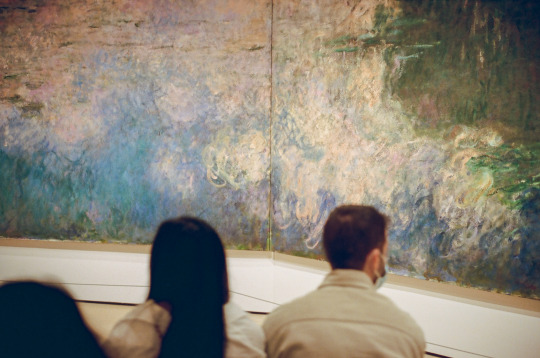
MOMA
september 2021
193 notes
·
View notes
Text

Claude Monet is my favorite painter! I wish I could see “Woman with a Parasol” in person as it’s my favorite, but this painting here might be my second fav. ☺️ Just saw this one today at the Chicago Art Institute!!!
23 notes
·
View notes
Text
every time someone calls contemporary art “not real art” an angel loses its wings (a creative and unique new artist gives up on their passion and the world becomes slightly less interesting where it could have become slightly more)
#maybe it’s not actually bad#maybe you’re just not creative or smart or interesting or open minded enough to understand it#maybe if you weren’t so narrow minded in your view of what art is/should be you would be able to appreciate the beauty and creativity in it#people have been trying to police what counts as “real” art since the dawn of time#van gogh and monet were once seen as “not real artists”#you are not on the side of history that you think you are#the only art that doesn’t count as real art is ai art#art comes from the soul#it comes from human emotion and creative self expression#everything else is just extra#you don’t need to understand the meaning for it to be meaningful#contemporary art defender#contemporary art#modern art#art#classical art#van gogh#vincent van gogh#claude monet#monet#anti ai art#art movements#renaissance art
52 notes
·
View notes
Text

Claude Monet (1840-1926)
Weeping Willow, 1921-1922
Oil on canvas
#claude monet#monet#fine art#art#paintings#artwork#artists on tumblr#painting#impressionist painter#impressionism#impressionist art#impressionist#art history#artist#artists#art on tumblr#art of the day#oil on canvas#oil painting#weeping willow#modern art#painter#french artist#giverny#french impressionism
50 notes
·
View notes
Text

#van gogh#starry night#vincent van gogh#1889#19th century art#19th century#moma#museum of modern art#oil on canvas#oil painting#Nocturne#paul gauguin#paul cezanne#claude monet#monet#arles#bedroom in arles#Vincent#sunflowers#post impressionism#painting#art history#van gogh museum#amsterdam#dutch artist#tortured artist#modern art#bouquet#flowers#ikebana
35 notes
·
View notes
Text






🏳️🌈 HAPPY PRIDE MONTH, MY LGBTQ+ ACADEMICS!!🏳️🌈
- in the honour of Pride Month 2024
Painters in order: Toulouse Lautrec // Edvard Munch // Gustave Klimt // Paul Cézanne // Vincent van Gogh // Claude Monet
#pride month#lgbt pride#gay pride#happy pride 🌈#trans pride#dark academia#art academia#classic academia#light academia#academia#art#art aesthetic#modern art#modern painting#rainbow#red#orange#yellow#green#blue#violet#toulouse lautrec#edvard munch#gustav klimt#paul cezanne#vincent van gogh#claude monet#academics#lgbtq#lgbtqia
47 notes
·
View notes
Text

Woman with a Parasol by Claude Monet (1875), National Gallery of Art, Washington D.C.
Psychology of Authority and Autonomy
In this painting, the elevated figure of the mother becomes a symbol of established authority. The parasol she holds acts as a protective barrier, shielding her from the vast sky—a classical representation of paternal authority. The child (the observer), positioned below and gazing upward, is caught between these two forces: the maternal (gaze) and the paternal (sky). The child in the painting serves as a mirror for the observer, drawing them back into their own childhood, as though the painting itself reflects and reconnects them to that formative time. The parasol, while symbolic of nurturing, also prevents the child from accessing the sunlight, which represents the full wholeness and validation often sought in life. This nuanced dynamic evokes the Oedipal complex, where a leader, much like the child, is motivated to achieve authority but continually feels a subtle disconnection from true paternal validation, no matter how close they come.
For a leader, this reflects an unconscious drive to succeed and seek wholeness through external validation. Yet, much like the child under the parasol, this wholeness remains elusive, leading to a constant tension between desire and authority. It hints at a deep internal conflict, where the leader is constantly striving for a sense of completion, but finds the path obscured by boundaries formed in early life, leaving them perpetually seeking but never fully satisfied.
The Sky as a Symbol of Ambition and External Pressure
The expansive sky represents more than just a background; it embodies societal expectations, market forces, and regulatory pressures that loom over the figures below. The absence of the sun, which would traditionally bring warmth and completeness, further emphasises a sense of stunted development, as if growth has been halted or interrupted, leaving a lingering feeling of incompleteness or stagnation. The leader who resonates with this painting might feel the weight of these external forces, continually striving to balance their personal ambition with societal demands. The parasol symbolises the temporary shields leaders erect to navigate these overwhelming expectations, but its fragility suggests that this protection cannot last forever.
For someone displaying this painting in their space, it symbolises a powerful psychological message: success and authority often come with an unrelenting pressure from above, and despite the shields we build, external forces inevitably shape our trajectory. This painting reflects the subtle battle between the desire for recognition and the weight of societal judgment, creating a space for reflection on how these pressures affect one's leadership style and strategic vision.
The Unconscious Desire for Control and Completion
The child, firmly grounded but gazing upwards, embodies the tension between instinctive desires and the unattainable completeness found in authority and control. The maternal figure, while protective, acts as a barrier preventing the child from attaining paternal validation. The parasol acts as a shield from the sunlight in the painting, with the sun symbolising paternal approval. It creates a barrier, preventing the figure from fully receiving the warmth and validation associated with the father’s presence. Leaders, like the child, may be driven by the unconscious desire to merge personal ambition with external validation, but they remain trapped in the cycle of pursuing authority without ever achieving the emotional wholeness they seek.
This painting powerfully reflects a psychological narrative that can play out in corporate and financial leadership. The persistent striving for success can often feel like chasing something elusive—external validation, whether through financial gains, public recognition, or authority—yet never fully feeling secure in that success. The parasol's role as a boundary reminds us that even when protection is present, it also creates distance, leaving the individual feeling both supported and isolated.
Leadership and the Pursuit of Validation
In this context, the painting speaks to leaders who find themselves in a perpetual state of striving—seeking approval from markets, superiors, and external forces, but feeling that something is always just out of reach. The absence of the sun reinforces this theme of incompleteness, suggesting that even at the peak of success, leaders may feel that their efforts lack the full validation they subconsciously desire. The child’s gaze toward the mother symbolizes the emotional tug of seeking nurturing and control, but ultimately being left in a state of wanting, never fully satisfied.
For a collector or executive drawn to this painting, it is a reminder of the psychological tensions inherent in leadership—balancing ambition, authority, and the perpetual quest for recognition. This artwork speaks to the unconscious desire to bridge the gap between personal achievement and external approval, while subtly reflecting on the costs of never fully attaining that sense of wholeness.
#aesthetic#art history#psychoanalysis#artwork#contemporary art#fine art#modern art#art gallery#psychology#art collection#claude monet#beautiful women#woman#emotional depth#emotions#art collectors#impressionism#mother#mom#loving#father#art analysis#authenticity#authority#forgiveness#purpose#understanding#values#acceptance#washington dc
22 notes
·
View notes
Text
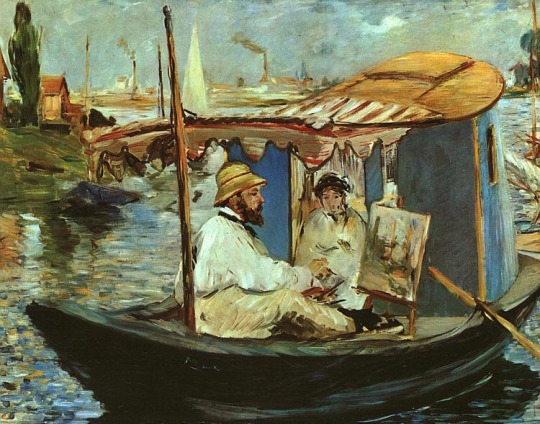
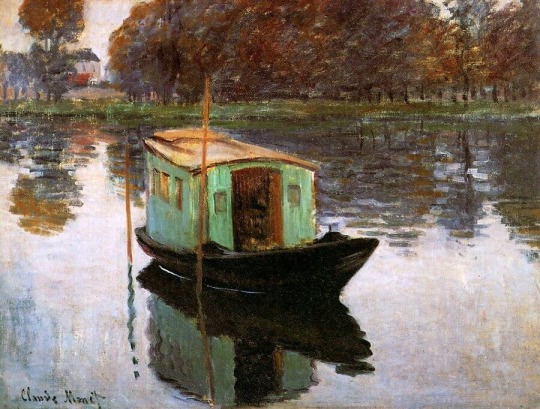
Edouard Manet, Monet in his Studio Boat, 1874
Claude Monet, The Studio Boat, 1874
#edouard manet#claude monet#french artist#french art#french painter#french painting#artist studio#boats#small boats#art on tumblr#impressionist#impressionism#impressionist painter#aesthetic#beauty#modern art#art history#aesthetictumblr#tumblraesthetic#tumblrpic#tumblrpictures#tumblr art#tumblrstyle
563 notes
·
View notes
Text

Ethereal Beauty of Weeping Willow inspired by Claude Monet
🌟 Art Print Options: Canvas Print, Framed Poster, Metal Print, Acrylic Print, Wood Print, Greeting Cards, Throw Pillows, Tote Bags, Zip Pouches, T-Shirt, Coffee Mugs, Jigsaw Puzzles and many more 🎨
#100_ArtPosters#landscape#abstract#nature#tree#forest#art#artwork#Painting#impressionism#modern art#claude monet
14 notes
·
View notes
Text


Le bassin aux Nymphéas - Claude Monet, 1899
Le Golfe de Marseille vu de l'Estaque - Paul Cézanne, 1885
#art#impressionism#post impressionist art#painting#modern art#beauty#landscape#france#giverny#claude monet#paul cezanne#marseille
12 notes
·
View notes
Text

Tangerine citrus trio.🎵🪘🎻🍊🍋🟩🟥🟧🟨🟪
#pop art#contemporary art#fine art#modern art#basquiat#moma#abstract expressionism#jazz#jazz music#clarinet#double bass#drums#drumming#drummer#picasso#keith haring#dekooning#claude monet#henri matisse#pablo picasso#jean michel basquiat#contemporary painting#andy warhol#whitney museum#lacma#art commisions#three musicians#jazz trio#louvre#musee d'orsay
12 notes
·
View notes